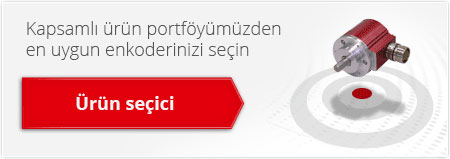Rotatif enkoderler, lineer enkoderler, sürücüler ve daha fazlası
Endüstriyel otomasyon çözümleriniz için TR-Electronic’in yüksek hassasiyetli rotatif enkoderler, lineer enkoderler, sürücü sistemleri tercih ediliyor. Safety encoder (güvenlik enkoderi) ve diğer otomasyon ürünlerimizle üretim süreçlerinizi optimize edin. Dünya çapında sayısız endüstrilerde kullanılmakta olan enkoder çözümlerimizden bazıları şunlardır:
– Lojistik sektöründe hassas pozisyonlama ve hareket kontrolü
– Kağıt ve baskı endüstrisinde yüksek hassasiyetli ölçüm sistemleri
– Ambalaj sektöründe hız ve pozisyon kontrolü
– Metal işleme teknolojisinde hassas ölçüm ve kontrol
– Ahşap endüstrisinde otomasyon çözümleri
– Yenilenebilir enerji sistemlerinde güvenilir pozisyon kontrolü
– Plastik sektöründe hassas kalıp kontrolü ve enjeksiyon pozisyonlama sistemleri
– Etkinlik teknolojilerinde sahne sistemleri otomasyonu hareket kontrolü TR-Electronic ürünleri tercih edilmektedir.










